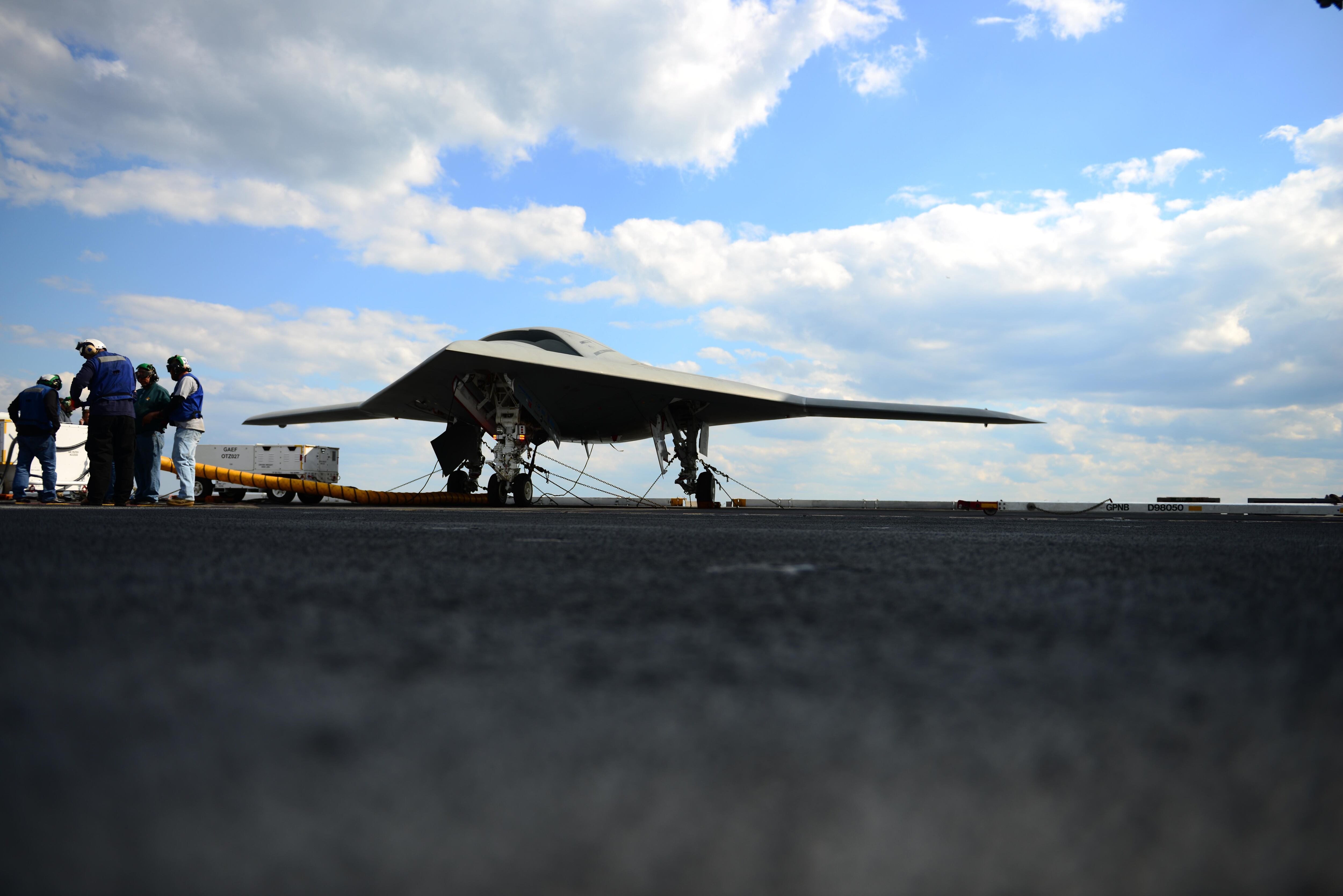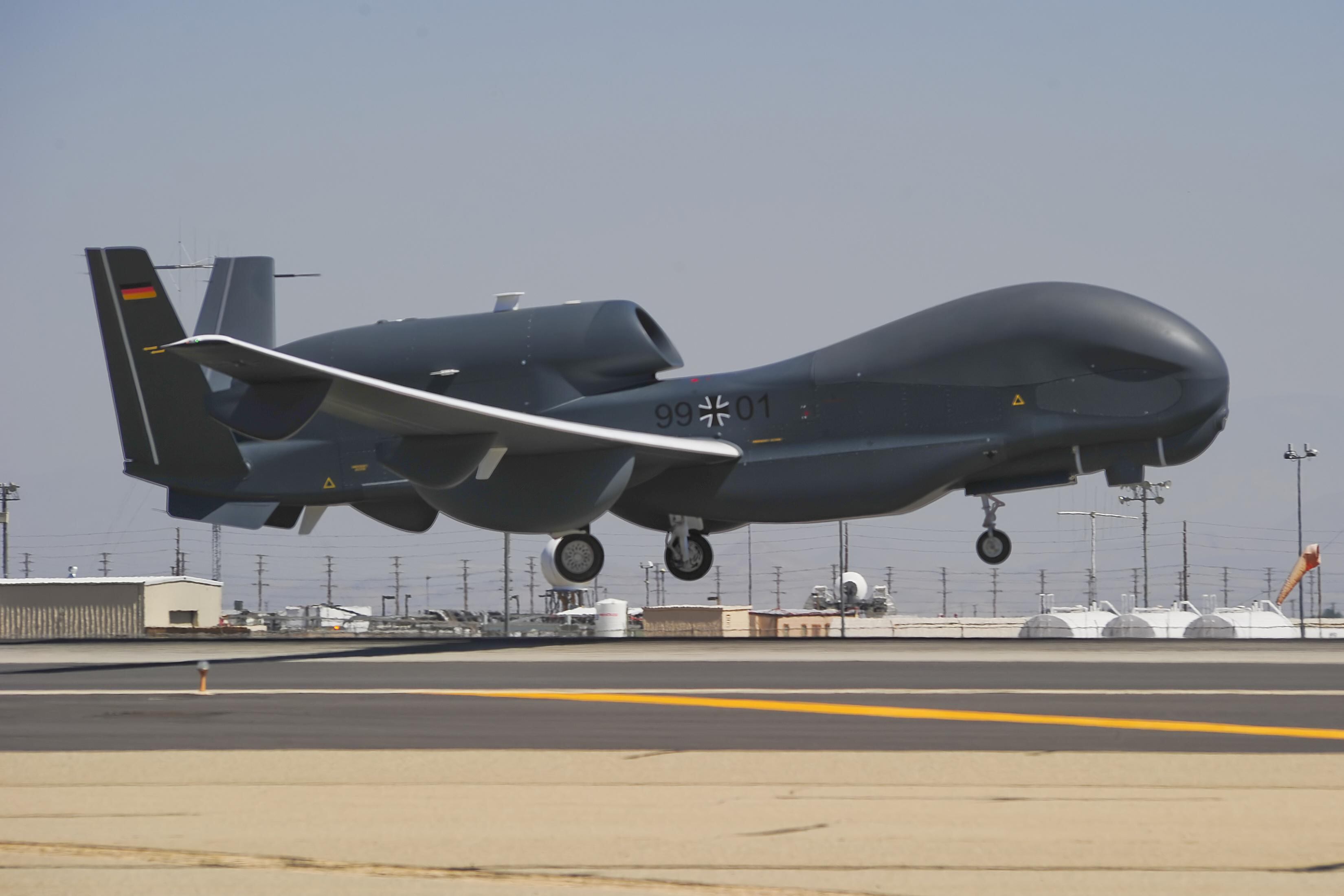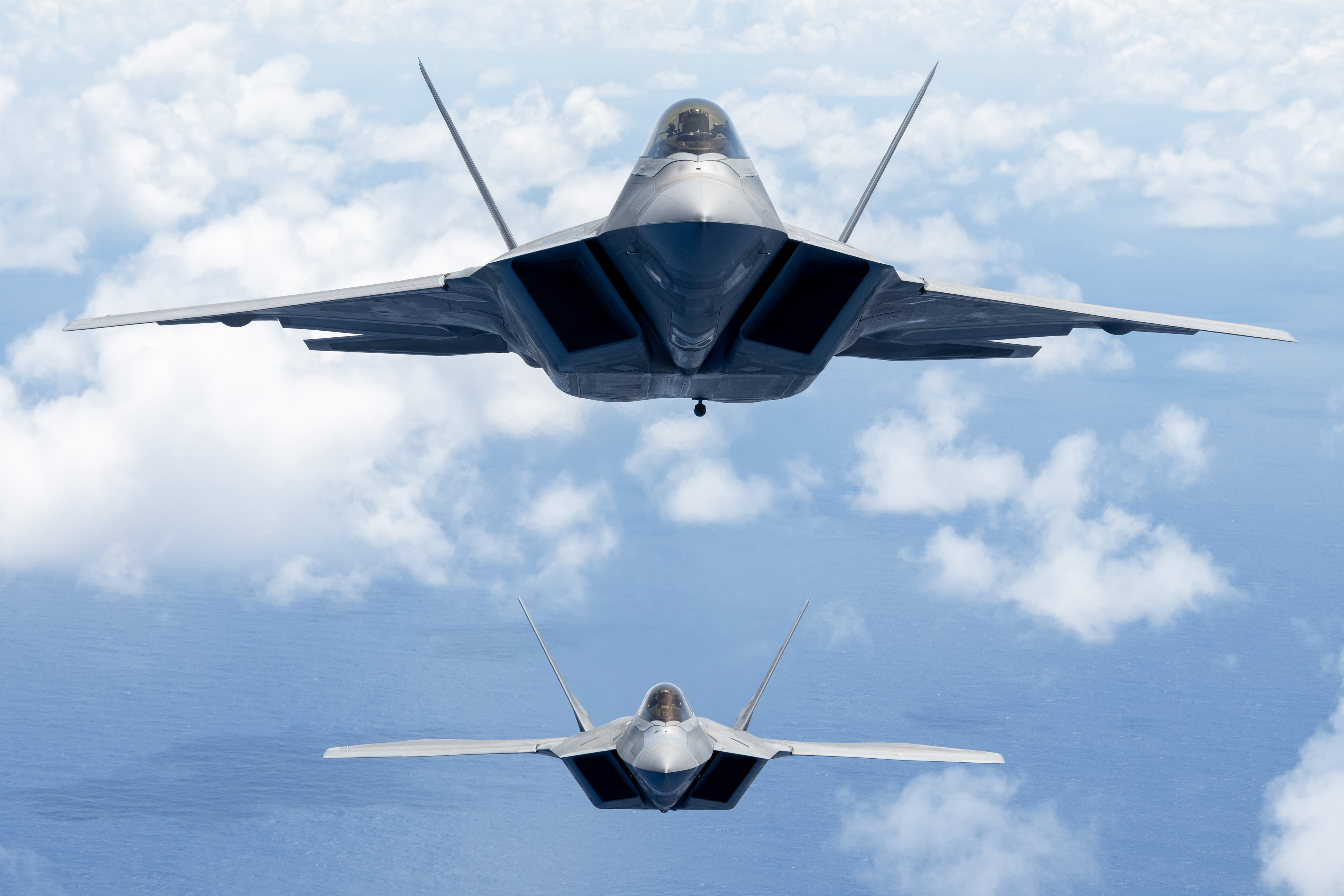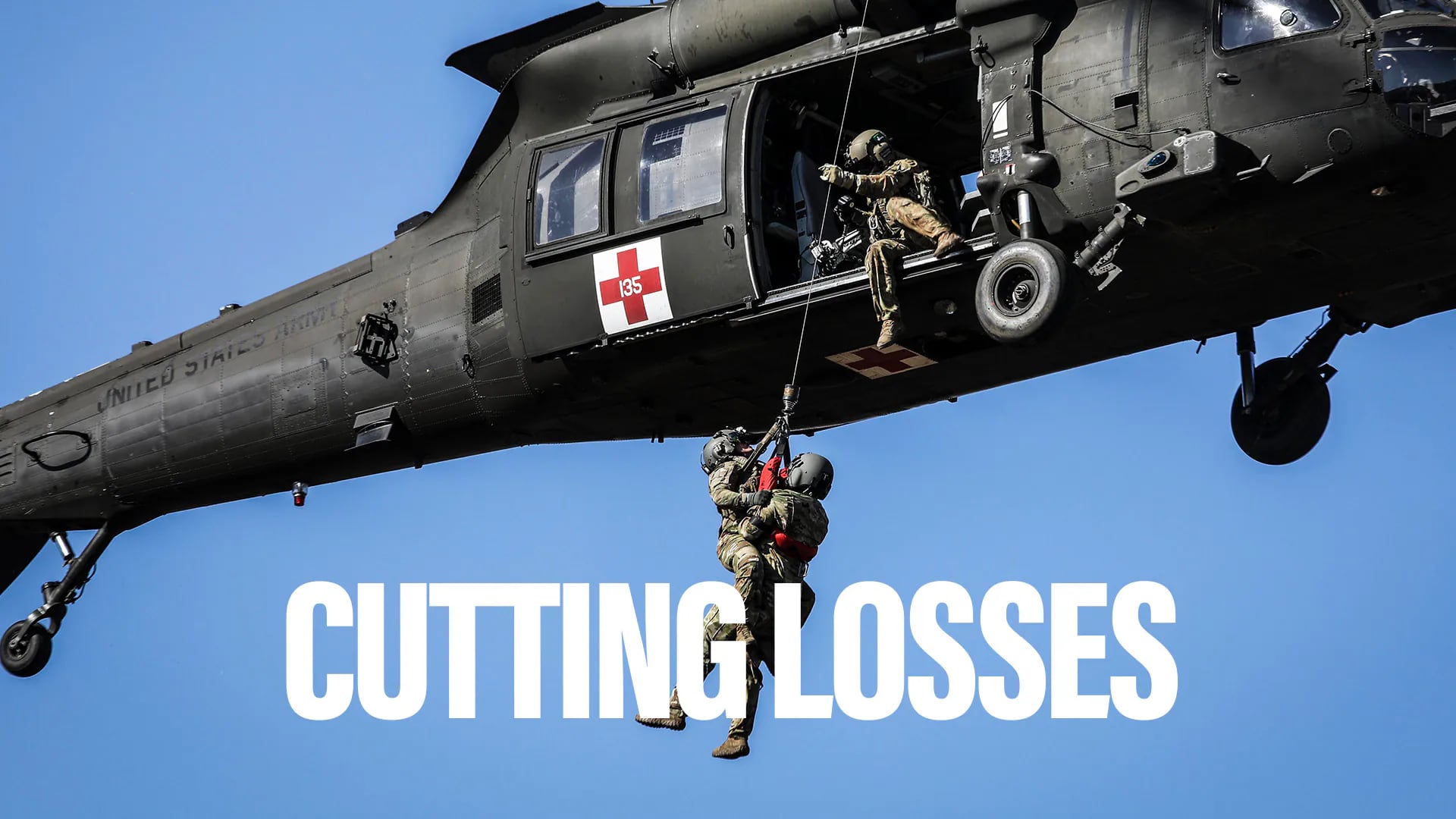For years, Predators, Global Hawks, Ravens and the other members of the West's unmanned menagerie have flown against little opposition. Maybe the skies haven't exactly been friendly, but at least al-Qaida and the Taliban had no jet fighters or sophisticated anti-aircraft defenses.
But those days are fading fast. Bad enough that the familiar threats like air defense missiles and guns are becoming more deadly. Now there are new threats that strike specifically at the vulnerabilities of unmanned aircraft.
The problem is that today's UAVs are not designed to survive a full spectrum of threats, says a 2014 NATO study on the subject titled "Remotely Piloted Aircraft Systems in Contested Environments." The design features and equipment that manned aircraft rely on to survive — such as stealth, radar and infrared warning receivers, jammers, fast speeds and agile maneuverability — were never priority items in current UAV designs, the study explains.
"That’s something I’ve been saying for a decade," saidlaments David Deptula, a retired Air Force lieutenant general who was the service’s first deputy chief of staff for ISR. "If you put an MQ-1 or an MQ-9 into an advanced threat environment, these things are going to be falling from the sky like rain."
But how much effort — and money — will be required to help UAVs survive in ever more hostile skies? Just how sensitive this issue is can be judged by the fact that all of the major military UAV manufacturers contacted by C4ISR & Networks either declined to comment or did not respond to queries.
Reading NATO's UAV vulnerability study is like watching a television crime show where the detectives muse about all the myriad ways that a victim can be killed, from a mundane gun or dagger to some exotic poison. The vulnerability analysis, conducted by the alliance's Joint Air Power Competence Center, breaks the parade of threats into eight broad areas:
- Surface-to-air missiles and anti-aircraft guns. If manned aircraft should fear increasingly sophisticated anti-aircraft weapons and integrated air defense systems, what about their unmanned cousins? "Sophisticated AD systems are highly capable of detecting, tracking and engaging even the most advanced combat aircraft," the report states. "Therefore, it can be concluded that current [medium-altitude long endurance] and [high-altitude long endurance] RPAs [remotely piloted aircraft systems] are no challenge for [surface-based air defense] systems."
- Hostile aircraft. Manned aircraft designed to shoot down other manned aircraft are obviously a threat to unmanned planes never designed for dogfighting. Significantly, given the large number of MiGs and other older Soviet-era and Western aircraft still in use around the world, the NATO study notes that "it can be assumed even legacy combat aircraft with a fairly low level of technology will impose a viable threat to any deployed RPAs due to their capabilities in air-to-air and air-to-ground combat."
- Electronic warfare. A UAV is only as capable as the links connecting the aircraft, the communications or GPS satellite, and the ground station. UAVs are vulnerable to jammed signals, spoofed GPS coordinates and "meaconing" (intercepting, falsifying and rebroadcasting GPS signals resulting in erroneous locations). While the alignment of antenna on most UAVs makes electronic warfare less effective against the aircraft itself, "the RPAs ground elements as well as the geostationary satellites are assessed as highly accessible to electromagnetic interference," according to the NATO study. "Disrupting only one communications element of the RPAs will severely impact overall functionality."
- Cyberwarfare. This includes intelligence gleaned from monitoring unencrypted UAV transmissions, disrupting UAV computers through viruses, or actually hijacking unmanned aircraft through malicious software. While military networks are normally secure, and "given that RPAs GCSs [ground control stations] are usually part of secured military networks, access to the RPAs by means of adversary remote access is difficult, but cannot be ruled out," the NATO study concluded. However, "the accessibility of RPAs network infrastructure to intrusion is also estimated as ‘high’ because infections of the GCS have already taken place."
- Surface-to-surface weapons. These range from ballistic missiles to rocket-propelled mortars and homemade mortars fired at ground stations. "Adversary target acquisition of RPAs infrastructure such as shelters, runways and GCS satellite dishes may also be quite easy as they usually cannot be hidden from view," the report says.
- Asymmetric forces. These include special forces and terrorist attacks on UAV facilities, as well as personnel at their homes.
- Man-portable air defense weapons. Though such weapons are plentiful, they are not the biggest danger to UAVs. "At decent operating altitudes, MANPADS cannot successfully engage RPAs. Although low speed, limited maneuverability and lack of protective measures could make RPAs highly susceptible to MANPADS attacks, based on the historical successful engagement rates in recent operations, the estimated accessibility of the RPAs to MANPADS is determined to be ‘moderate,’ " the NATO study concludes. "On the other hand, they are vulnerable during takeoff and landing."
- Anti-satellite weapons. Satellite killers threaten both the communications and GPS satellites that UAVs rely upon. Yet while a potential threat, few nations have anti-satellite weapons, so the overall threat is fairly low.
What is most striking about the NATO report is that the vulnerabilities it identifies aren't new. Many have long been faced by manned aircraft. For example, UAVs aren't the only systems susceptible to disruption of command-and-control centers and links. As the U.S. and Israeli air forces have demonstrated in the skies over Iraq and Syria, knocking out these facilities leaves manned aircraft equally blind and helpless. If that's the case, then perhaps instead of reinventing the wheel, the trick may be to take the same protective measures for manned aircraft and apply them to their unmanned counterparts.
"Many threats against RPAs are equal to those directed against manned aircraft," agrees Major Andre Haider, the German Army officer who helped author the NATO UAV vulnerability study. "However, there are a lot of threats which are unique to RPAs and haven't been addressed so far. So for all those 'old' threats, the appropriate countermeasures needn't to be reinvented but to be adapted to the RPAs."
Yet similar threats may require different remedies. "They may not be very different for the protection of an airfield, for example, but it definitely is a challenge to introduce existing manned aircraft countermeasure technology into the unmanned aircraft itself," Haider says. "Size, weight and power are the keywords here."
The NATO study recommends more than a hundred specific improvements to enhance UAV survivability. Some seem like matters of common sense, like equipping all UAVs with Identification Friend or Foe transponders. Others seem straightforward technical solutions, such as minimizing UAV visual, radar and infrared signatures, or equipping them with radar and infrared warning receivers and countermeasures. A 360-degree array of cameras would give operators better situational awareness.

Northrop Grumman personnel conduct preoperational tests on an X-47B Unmanned Combat Air System demonstrator on the flight deck of the aircraft carrier George H.W. Bush.
Photo Credit: MC3 Kevin J. Steinberg/Navy
Longer-range air-to-ground weapons would enable UAVs to strike from outside the range of air defenses. Designing larger unmanned aircraft to operate at stratospheric altitudes, where most anti-aircraft weapons don't reach, would enhance their prospects.
Redundant and more rugged components would enable UAVs to better survive battle damage. "To improve ballistic tolerance, RPAs should incorporate passive damage suppression measures such as shielding of critical components with armor, use of self-sealing coatings for fuel tanks and application of fire-resistant materials," the study suggests.
Enhanced electronic and cyber defenses are especially important. "If a manned aircraft is subject to an electronic warfare attack, it is still under control of the onboard pilot," Haider says. "He might have lost communications to the air operations center but can continue to fulfill his task where current RPAs cannot. So electromagnetic resilience and cybersecurity are much more important for an unmanned system than for a manned one."
Deptula, now dean of the Air Force Association's Mitchell Institute for Aerospace Studies, also sees secure communications as vital. Indeed, Deptula envisions a future governed by the "combat cloud," where information from an array of sensors across air, land, sea and space are combined. But for that to happen, "what you need is a way to share information and integrate it in a very robust, reliable and redundant fashion."
Protecting UAVs requires more than technology, however. The NATO study also points to doctrine and tactics as defensive measures. Though UAVs are seen as means of avoiding risk to manned aircraft and aircrews, one option is to assign manned aircraft as escorts. While this seems a reversal of manned versus unmanned roles, Haider notes that Predators were assigned escorts during operations over Libya because of the few unmanned assets available and the vital sensor capabilities they provided. "I don't think that this will result in a reversal of roles in the future, but if an unmanned system is considered a high-value asset and is the only system which can offer a dedicated capability, this is a valid option," he adds.
However, Haider also sees manned escorts as a temporary defensive measure. "My vision is that future combat RPAs will be used to provide the permissive airspace required to operate."
This brings up the issue of UAVs defending themselves with their own weapons. NATO recommends equipping UAVs with air-to-air missiles and training their crew in aerial combat. However, most current UAVs lack the size, weight and power for such missiles.
Economics plays a rather subtle role here. For example, the study recommends higher operating altitudes to force an adversary into an economic dilemma: Use their more sophisticated anti-aircraft weapons to engage UAVs that cost less than the weapons used to destroy them, or save their expensive weapons for more valuable targets. On the other hand, arming current UAVs doesn't add up; "most advanced air-to-air missiles have unit costs which equal or exceed the value of current RPAs," the study points out.
For the future, the study recommends a mix of UAVs. Deep-penetration UAVs would be stealthy, supersonic and largely autonomous as they struck deep in enemy territory. Combat UAVs would handle air-to-air and air-to-ground missions, reconnaissance UAVs would handle surveillance missions, while swarm UAVs would be numerous, cheap and expendable for dirty and dangerous missions. Carrier UAVs would function like "bomb truck" manned aircraft, unleashing a flock of long-range air-to-ground missiles.
Deptula supports the idea of using multiple types of UAVs. "It is not like we are just going to operate at the high end of the spectrum. Just like we need to be careful not be walled into a sense of security that we will always be operating in permissive airspace."
The NATO researchers delicately approach the extremely sensitive issue of autonomous combat UAVs. "Future use of higher levels of automation is a prerequisite in enabling many of the recommendations made in this study," the study says. It recommends dividing combat autonomy into two categories.
Deliberate attack against targets designated by the joint targeting process, including both preplanned and dynamic targets, would require a human in the loop to give the go-ahead. However, active attacks against the UAV itself would be met by an automated weapons response without human intervention. "The threshold of what is considered an active attack should follow the same principles as for manned combat aircraft," the study says.
Yet, despite the necessity for UAVs to function much more autonomously in combat, the study recognizes the ethical and legal implications. "What is technically possible is not necessarily desirable," it warns.

A NATO study points to myriad ways UAVs are vulnerable, and suggests some simple fixes. Shown is a Euro Hawk, a variant of the high-altitude-surveillance Global Hawk built for Germany.
Photo Credit: Northrop Grumman








